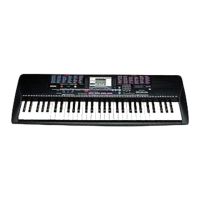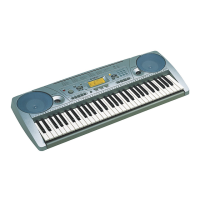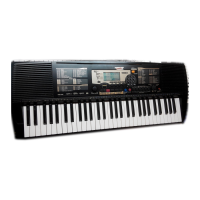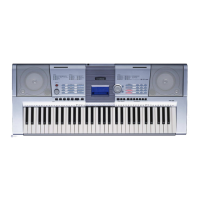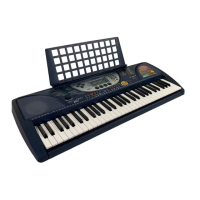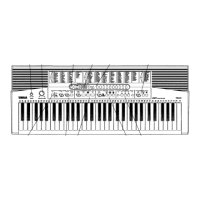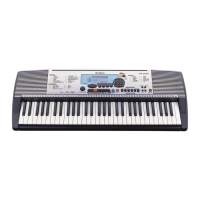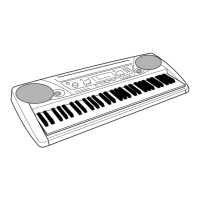
Do you have a question about the Yamaha PortaTone PSR-260 and is the answer not in the manual?
| Voices | 100 |
|---|---|
| Styles | 100 |
| Display | LCD |
| Type | Portable Keyboard |
| Number of Keys | 61 |
| Effects | Reverb, Chorus |
| Connections | Headphone, MIDI, DC In |
| Power Supply | AC Adaptor |
| Polyphony | 12-note |
| Amplifier | 2 x 2.5W |
Essential safety guidelines for preventing electrical shock, damage, fire, and injury.
Details on the interactive music learning tools: Lesson, Grade & Talking, and Dictionary.
Instant access to realistic piano sound and performance settings for enhanced piano play.
Explore contemporary dance music with DJ sounds, rhythms, and interactive gameplay.
Identification and function of buttons, keys, and displays on the front panel.
Description of rear panel jacks for headphones, power, MIDI, and footswitch.
Instructions on using the AC adaptor or batteries for power and proper installation.
Guide to connecting headphones, amplifiers, sustain footswitches, and MIDI devices.
Learn to select and play the 100 instrument voices available on the PSR-260.
How to select and play the 100 built-in songs for listening or practice.
Guide to using the auto accompaniment feature for chord-based backing.
Practice song timing, note accuracy, and playing muted parts with Lessons 1-3.
Instantly access realistic piano sound, settings, and accompaniment for piano play.
Utilize DJ sounds, rhythms, and interactive features for creating dance music.
Guide to choosing from the 100 available instrument voices using the panel.
Automatically set voices and settings when selecting styles or songs.
Adjust the keyboard's key and fine-tune pitch for better compatibility and sound.
Control dynamic volume expression based on playing strength.
How to select, play, and control the 100 built-in songs.
Replace the original song melody voice with a selected panel voice.
Adjust tempo, volume, and use song playback controls like pause and rewind.
Repeat specific song sections for focused practice and learning.
Practice song timing, note accuracy, and playing muted parts with Lessons 1-3.
Master entire songs by playing both muted left and right hand parts simultaneously.
Get performance feedback and announcements during lessons.
Select from 100 dynamic rhythm and accompaniment patterns for performance.
Start and control the instrumental backing using panel buttons and keyboard input.
Start styles by tapping tempo or playing a keyboard key for synchronized playback.
Dynamically switch between style sections (A/B) and use fill-ins for variation.
Control the volume level of the auto accompaniment independently.
Learn Single Finger and Fingered chord methods for accompaniment control.
Learn basic music theory concepts related to chords and their notation.
Trigger musical phrases and rhythmic patterns using the Multi Pad buttons.
Comprehensive list of all panel voices with program change numbers.
Mapping of drum kit sounds to keyboard notes and MIDI assignments.
Categorized list of all available styles and multi pad bank contents.

